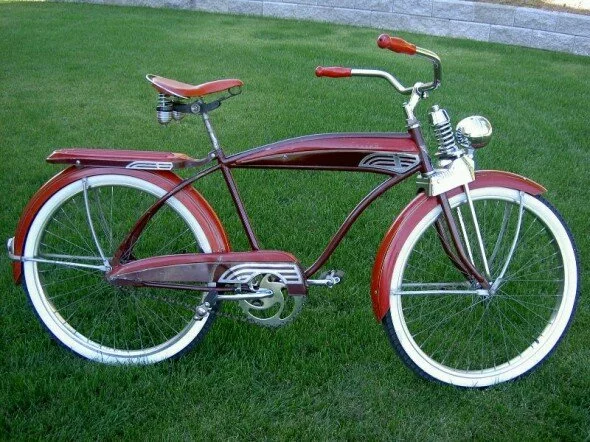![]() Manufacturer : Honda
Manufacturer : Honda
![]() Productions : 1981
Productions : 1981
![]() Engine : Twin cylinder Air-cooled Four-stroke, Single Over Head Cam Parallel twin.
Engine : Twin cylinder Air-cooled Four-stroke, Single Over Head Cam Parallel twin.
![]() Transmission : -
Transmission : -
Honda introduced several 200 cm³ bikes with similar engines but different body variations in the 1980s. The model introduced in South Africa and Pakistan was known as the CD 200 “Road Master”. It was a detuned version of the Honda CD185 twin. The CD 200 sold more for its looks then performance as its square speedometer, huge front and rear mudguards, twin chrome exhausts, neatly tucked in choke behind handle bars and a chrome plated fuel tank with the Honda logo contributed to an interesting styling.
The bike was a cheap commuter vehicle with a claimed 100 miles (160 km) per gallon and a smooth ride. Too slow for a 200 cm³ bike, its top speed was only 70 mph (112 km/h) as the engine was detuned to keep maintenance cost to a minimum. This bike targeted users who wanted a comfortable cheap transport suitable for long routes with low maintenance. Use of simple drum breaks in rear and front and a single carburetor were other measures used to keep the maintenance low. The bike accelerated hard up to 65 mph (105 km/h); after that it was a flat ride. The engine had to be revved very hard to create any kind of excitement as the bike was too heavy (140 kg) for an engine that produced a modest 16 bhp.
This model suffered from various manufacturing faults like a noisy cam chain and an unreliable electrical starter (later models were upgraded with 12 volts CDI system in the UK.). In the UK the CD200 was affected by legislation restricting learner riders to bikes limited to 125 cm³ and 12bhp. Honda introduced a 125 cm³ Benly after the CD200 was withdrawn.The CD 200 Road Master was sold in South Africa until late 2004 and was used mainly as a courier/delivery bike.It retained the 6 volt electrics and points ignition.












